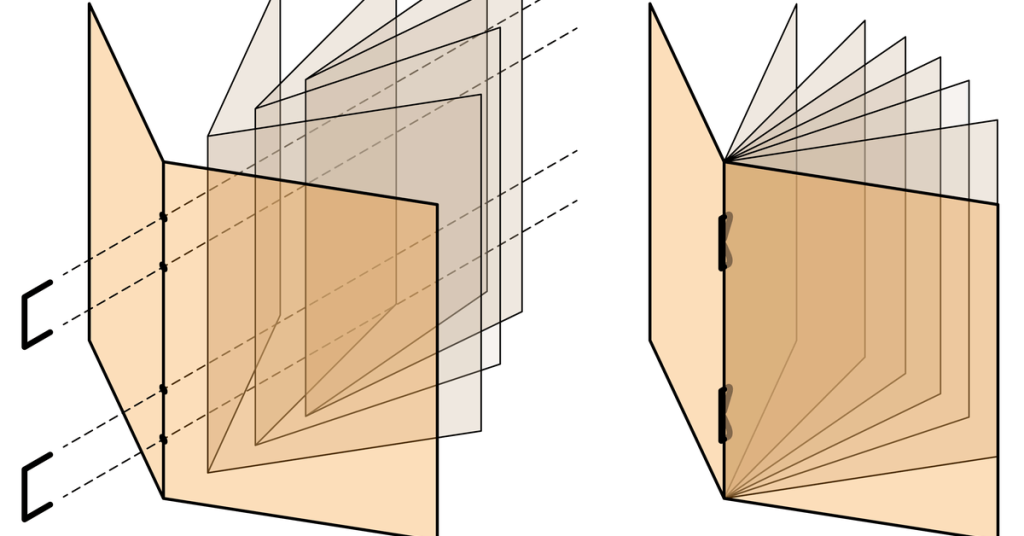Table of Contents
- Introduction
- Understanding Saddle Stitch Binding
- Planning Your Booklet
- Designing the Layout
- Choosing Paper and Materials
- Printing and Binding
- Proofing and Finalizing
- Distribution Strategies
Creating impactful saddle-stitched booklets involves balancing design, content, and functionality to maximize engagement. This binding method is cost-effective for short to medium print runs and ideal for programs, catalogs, and promotional materials. Key considerations include selecting the right paper stock, ensuring page counts suit the format, and using clear layouts for easy readability. Thoughtful design elements such as compelling visuals, balanced text, and consistent branding enhance appeal. While perfect for thinner publications, alternative binding may be better for thicker projects. With careful planning, saddle-stitched booklets can effectively convey messages, showcase products, and leave a professional, lasting impression on the audience.
Introduction
Whether promoting a product line, informing customers, or sharing information at an event, a well-designed saddle-stitched booklet delivers your message with professionalism and impact. Modern businesses and organizations trust the high-quality saddle stitch booklet for catalogs to combine economical production with an upmarket look that elevates their materials above the rest. This guide details every critical step from concept to distribution, ensuring your booklet stands out for the right reasons.
Saddle-stitched binding remains the method of choice for brochures, magazines, thin catalogs, and marketing materials thanks to its clean finish and ability to accommodate a range of designs without breaking the budget. Prioritizing quality at every phase will help you get the desired results, whether your project aims to inform, persuade, or educate.
Understanding Saddle Stitch Binding
Saddle stitch binding is a straightforward and efficient process involving folding sheets and stapling them along the fold line (the spine). This creates a neat, professional booklet with a neat, professional finish. It’s a preferred binding method for booklets between 8 and 64 pages, providing strength and durability without added bulk. Its cost-effectiveness makes it the go-to choice for event programs, newsletters, and marketing brochures where quality and affordability are essential.
Planning Your Booklet
Getting your saddle-stitched booklet right begins with precise planning. Define your booklet’s primary purpose—to educate, market, or inform? Pinpointing your objective will shape your content and design, ensuring every page serves your end goal. Next, identify your core audience by considering their interests, needs, and preferences. Tailor both language and imagery to ensure the material feels relevant and engaging to your intended readers. An effective way to guarantee a logical flow and keep information organized is to outline the key sections before moving to the design phase.
With your objectives and audience established, develop a detailed content outline that breaks the booklet into a sequence of topics or chapters. This helps prevent missed information and unnecessary repetition and ensures a clear progression from the introduction to the conclusion or call to action. For further tips on content planning and audience targeting, this Indeed guide provides valuable insight.
Designing the Layout
A professionally designed layout enhances the look of your booklet and makes it easier for your audience to absorb the information within. Employ consistent typography across headings, subtitles, and body content to maintain visual harmony and readability. Visual hierarchy is key—use headers, bullet points, and callout boxes to draw attention to important information and guide readers through the content seamlessly. Visuals like charts, high-resolution images, and infographics should accentuate your message rather than clutter the pages. Remember to strike a balance: plenty of white space prevents the layout from feeling overwhelming.
Choosing Paper and Materials
The tactile experience of your booklet influences how it’s perceived. Select a paper that complements your booklet’s intent. Glossy paper creates vivid color reproduction, which is ideal for image-rich projects like portfolios or product catalogs. Matte paper, on the other hand, offers a more subdued look that reduces glare and enhances text readability—best suited for instructional manuals or literary publications. Investing in a heavier cover, known as cover stock, adds durability and gives the booklet a premium, lasting feel. For guidance on the best paper type for your needs, reference this paper guide from Printing for Less.
Printing and Binding
Printing and binding are the final stages of your plan and design becoming a physical reality. One of the most critical considerations is total page count: saddle stitch booklets require pages in multiples of four. Failing to do so means adding blank pages or removing content to fit the format. Properly set margins and bleeds are vital—bleeds prevent unintended white borders after trimming, while consistent margins maintain a balanced appearance across spreads. Leveraging professional print services ensures that colors are accurate, images are crisp, and the finished product is durable with cleanly finished edges.
Proofing and Finalizing
Proofing your booklet before committing to a full print run helps catch errors that could undermine your professionalism. Begin with thorough proofreading to eliminate grammatical mistakes and improve clarity. Always request a physical test print: colors and layout can look very different in print compared to a digital screen. Involve peers or stakeholders in the review process to gather helpful feedback and ensure the booklet meets all original objectives. If significant changes are necessary, revise and re-proof until satisfied with the result.
Distribution Strategies
Once finalized, consider the most effective distribution channels to maximize your booklet’s reach. Direct mail campaigns remain a high-ROI choice for targeted outreach—sending your booklet to a qualified list ensures it lands in those most likely to take action. Trade shows, seminars, or local expos offer opportunities to distribute booklets directly to interested parties and initiate face-to-face conversations. For brick-and-mortar businesses, strategically placing booklets in high-traffic areas can increase pick-up rates and encourage customer engagement. Digital versions or downloads can supplement your strategy, expanding access beyond physical limitations.
Employing these steps ensures your saddle-stitched booklet stands out, reflecting the quality and attention to detail that today’s audiences expect. When executed correctly, this classic print format is a powerful tool for branding, information-sharing, or driving sales.

